I’ve been meaning to write this post for awhile. As many of you know, we’ve taken Nicole in for some testing through the school district. 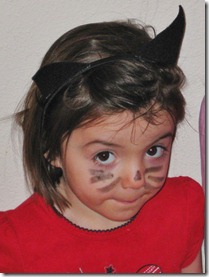
Nicole is an energetic, friendly, creative little girl. She speaks clearly with good articulation and good sentence structure. She likes things that most little girls her age seem to like and she plays well independently. Of all our children, she is the most outgoing and friendly. It can be a little unnerving how easily she allows unfamiliar adults to pick her up and hug her. Many of our friends were surprised to hear that we suspected that something was not completely normal about her.
The tricky part is clearly defining our concern. Zach and I discussed for months whether we thought that maybe she has an issue/disability or is within the range of normal. Luckily for us, the school district is required by law to provide free testing for any 3 year old whose parents request it (there is testing for younger children through early intervention as well).
Her problems seem to lie primarily in the area of language comprehension. I say seems to, because it is hard to know what someone else comprehends. This problem is most clearly demonstrated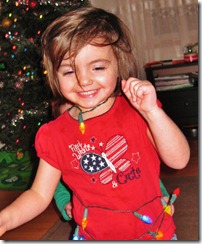 in a question/answer situation. She does not respond to most questions in a typical way. It’s almost as if she doesn’t understand questions or that she doesn’t understand that a question requires an answer. She does not answer even the most basic questions like “what is your name†or “how old are you.†When you ask her a question she often repeats part or all of the question or gives you a confused look and doesn’t respond at all. This problem was very clear in the testing situation because asking questions was their primary means of trying to evaluate what she knows. By the end of the first screening test, my concern had increased because I could see that if something didn’t change, she would have a lot of difficulty in a school setting. The official testing placed her at a 28 month level for comprehension which is more than a year behind her age.
in a question/answer situation. She does not respond to most questions in a typical way. It’s almost as if she doesn’t understand questions or that she doesn’t understand that a question requires an answer. She does not answer even the most basic questions like “what is your name†or “how old are you.†When you ask her a question she often repeats part or all of the question or gives you a confused look and doesn’t respond at all. This problem was very clear in the testing situation because asking questions was their primary means of trying to evaluate what she knows. By the end of the first screening test, my concern had increased because I could see that if something didn’t change, she would have a lot of difficulty in a school setting. The official testing placed her at a 28 month level for comprehension which is more than a year behind her age.
She also has difficulty following verbal instructions. In a group setting if a request is made of the group, she will wait until the other kids respond and watch how they respond before responding in a like manner. She does not seem to understand unfamiliar requests without some sort of visual que. I say unfamiliar because there are some routine requests that she can do on her own such as put on her shoes or sit in her seat. An unfamiliar request can be as simple as “point to the purple block†or “stack the blocks.†I observed her in a group where she was asked to circle a snowman. She knows what a snowman is and she can draw a circle, but she didn’t respond to the directive until she looked over and saw a peer circling a snowman.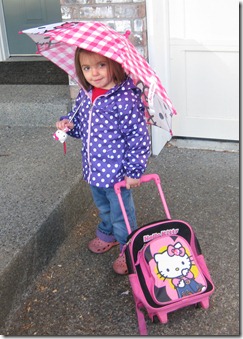
For a long time, we had a hard time getting her to understand discipline. She would cry when we raised our voices at any of the children as if we were yelling at her, yet she would smile and laugh or just look confused if we scolded her. It was as if we were speaking a different language, she often seemed to be trying to interpret our tone or facial expression more than our words. We finally had a break-through in discipline when we spanked her. She soon learned that if we said the word spank, then she needed to stop what she was doing.
I’ve also noticed that when she gets emotional, she seems to lose the ability to comprehend. She would understand and respond appropriately if I asked her to go get dressed, but if I yelled at her to get dressed she would seem flustered and confused and just cry.
Sometimes she’s just odd. The other night we had some people over for family night. In the group were some adults that she was a little familiar with and some adults that I don’t think she had ever met or interacted with before. She climbed on each guest’s lap, but only stayed for 2 seconds before moving on to the next adult. Then she hugged each guest’s knees. After hugging knees, she went around the room and felt their hands and announced whether they had warm hands or cold hands. Then she started stroking their shoes. She made no distinction between the adult she had spent some time with and the adults that she had never met.
Her social interactions with other children primarily consist of parallel play or copying what they do. She will play a cooperative game with Charlotte, but generally Charlotte directs the game and tells Nicole what role to play and what to do.
The results of her testing are that she qualifies for services under the classification of communication disorder and she will start 45 minute therapy sessions once a week at the school in January. I will be interested to see how she responds to these sessions.
 She has several names for it. At first she called it a princess book. Now she either calls it “The Big Head King Book†or “His Head Goes Back to Normal book.â€
She has several names for it. At first she called it a princess book. Now she either calls it “The Big Head King Book†or “His Head Goes Back to Normal book.â€







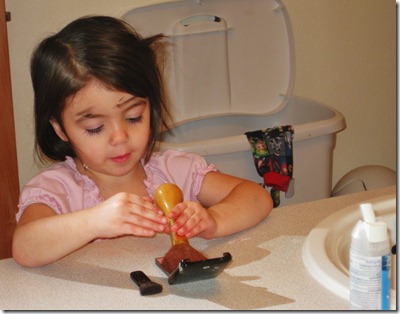
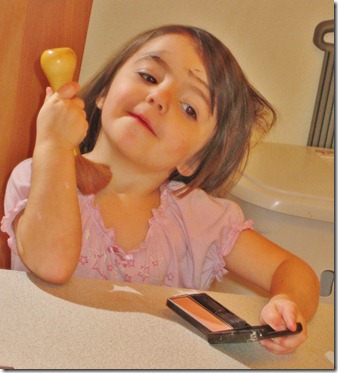
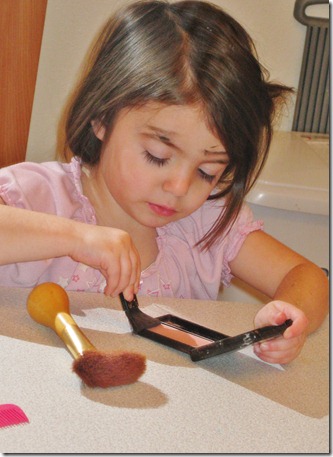
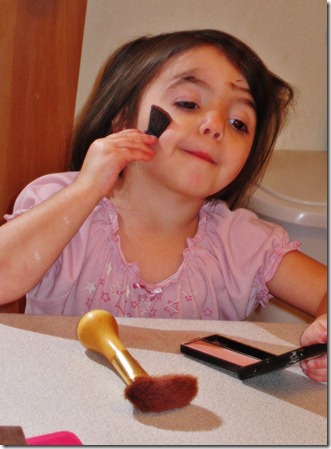
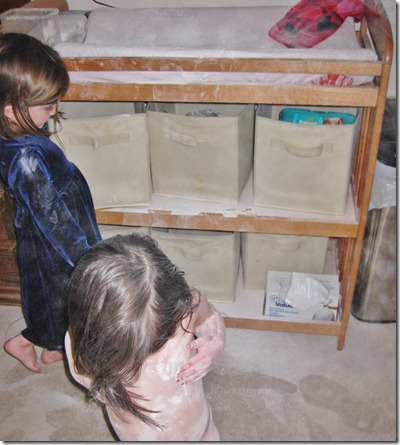







































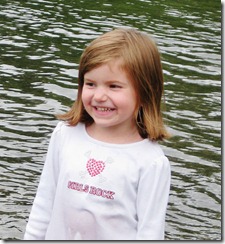
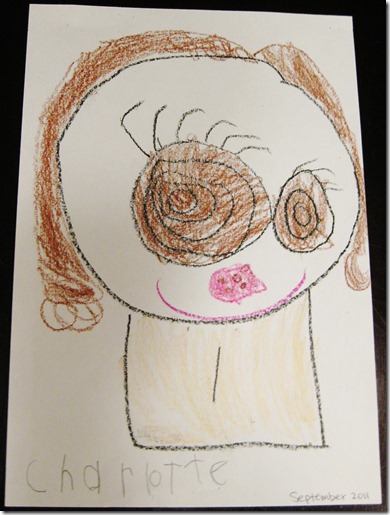
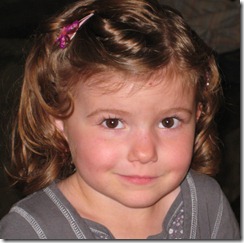
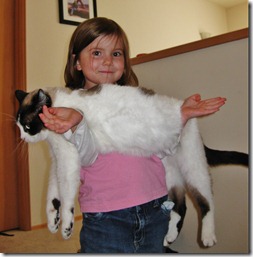
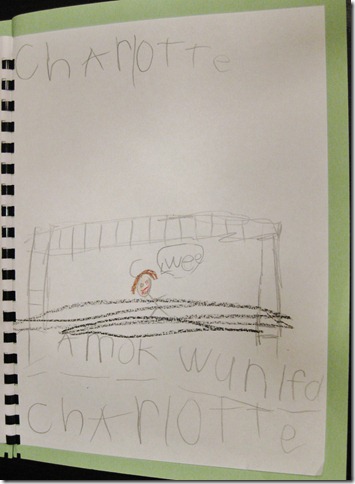



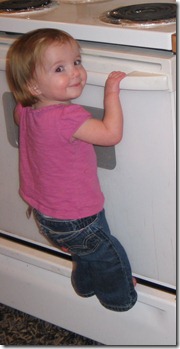
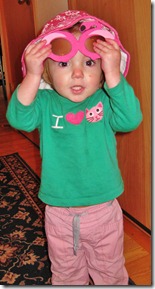
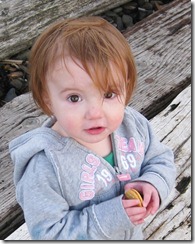


 This is a Eustace colored bunny that we saw at the pet store:
This is a Eustace colored bunny that we saw at the pet store:
 The kids love finding animals that look like Eustace. I can’t remember a long drive that we have taken where we haven’t found a whole pasture full of Eustace Cows. We call him our cow-colored cat and his coloring is so common, that we regularly find pictures of cats that look like him in adds or on bags of things such as cat food or cat treats. We sometimes jest that he has a secret life where he sneaks out to be in commercials or photo shoots.
The kids love finding animals that look like Eustace. I can’t remember a long drive that we have taken where we haven’t found a whole pasture full of Eustace Cows. We call him our cow-colored cat and his coloring is so common, that we regularly find pictures of cats that look like him in adds or on bags of things such as cat food or cat treats. We sometimes jest that he has a secret life where he sneaks out to be in commercials or photo shoots.


